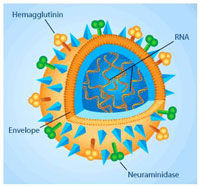Scripps research scientists shed light on potential treatment for Gaucher's disease
Advertisement
In findings that advance scientists' understanding of a whole class of inherited disorders, a team from The Scripps Research Institute has shed light on a mechanism that enables a potential treatment for Gaucher's disease and other lysosomal storage diseases. The findings were published in of the journal Nature chemical biology.
"This study is likely to motivate clinical trials for the treatment of neuropathic lysosomal storage diseases, including Gaucher's disease, where the current standard of care, enzyme replacement therapy, is ineffective," said team leader Jeffery Kelly, who is chair of the Scripps Research Department of Molecular and Experimental Medicine, Lita Annenberg Hazen Professor of Chemistry, and a member of the Skaggs Institute of Chemical Biology. "The research is especially promising because we enhanced the cellular folding and function of mutated lysosomal enzymes, whose deficient function is linked to lysosomal storage diseases, using two distinct categories of FDA-approved drugs that have been shown to be safe and effective for the treatment of high blood pressure and muscle spasms."
"We wanted to uncover general principles that could be applied to a variety of loss-of-function protein misfolding diseases," added Derrick Sek Tong Ong, a graduate student in the Scripps Research Kellogg School of Science and Technology who was first author of the paper. "This study reveals how we can enhance the capacity of the cellular machinery to fold and traffic a mutant enzyme, so that the protein can function better."
In the new paper, the team revealed how the widely available prescription drugs diltiazem, verapamil, and in some cases dantrolene, acted on cells from patients with Gaucher's disease, increasing calcium levels in a subcellular compartment called the endoplasmic reticulum — a convoluted membranous sac within the cell where the folding of many proteins takes place.
The current approaches for treating Gaucher's disease (and a few of the 40 or so other lysosomal storage disorders) involve replacing the deficient enzyme with an enzyme that is made using recombinant engineering and then is injected into the patient. Enzyme replacement therapy is an effective way to restore many patients to good health, but it has drawbacks. The enzyme has to be infused intravenously or through a surgically implanted catheter — usually in a doctor's office — a process that takes several hours and must be repeated every one or two weeks. Enzyme replacement therapy is also expensive, costing between $100,000 and $750,000 per year per patient. And this therapy is not effective at treating neurological complications of lysosomal storage diseases because injected enzymes cannot enter the brain.
However, a series of papers from the Kelly lab has shown that several other treatment approaches hold promise. In a paper published in PLoS Biology in 2008, the lab found that the prescription drugs diltiazem and verapamil were effective in restoring partial cellular folding, trafficking, and function to mutant enzymes responsible for three lysosomal storage disorders, including Gaucher's disease.
The scientists suspected that the drugs enhanced the interaction between the mutant lysosomal enzyme and the machinery of the cell that folds proteins, the so-called "chaperones" (helper proteins). Enhanced chaperone function, the scientists believed, might enhance the extent of mutant enzyme folding in the endoplasmic reticulum, allowing more of the mutant enzymes to engage the trafficking pathway that transports them to the lysosome. Even though the mutant enzymes are not completely normal, they exhibit sufficient function (greater than 10 percent) to improve the lysosomal storage phenomenon that causes these maladies.
But to make a more persuasive case for expensive clinical trials, the scientists wanted to understand the mechanism(s) by which the drugs were altering the cellular chaperones. The new study helps answer this question. Using biochemical, pharmacologic, and siRNA techniques, the scientists examined the hypothesis that these drugs increased calcium levels in the endoplasmic reticulum post-translationally enhancing the calcium-regulated chaperones.
"We interrogated the importance of two calcium efflux channels and one pump (SERCA) on endoplasmic reticulum calcium levels," said Ong. "We found that one of the calcium efflux channels was sufficient to increase calcium levels—the ryanodine receptor."
These drugs appear to enhance the function of a chaperone called calnexin, which is expected to aid the folding of most lysosomal enzymes because of their common biochemistry (post-translational modification–N-linked glycosylation).
While Ong is hopeful that the drugs will be effective for treating Gaucher's disease and other lysosomal storage disorders, he also cautions that many steps still need to be taken before such treatment is approved for use in patients.


























































